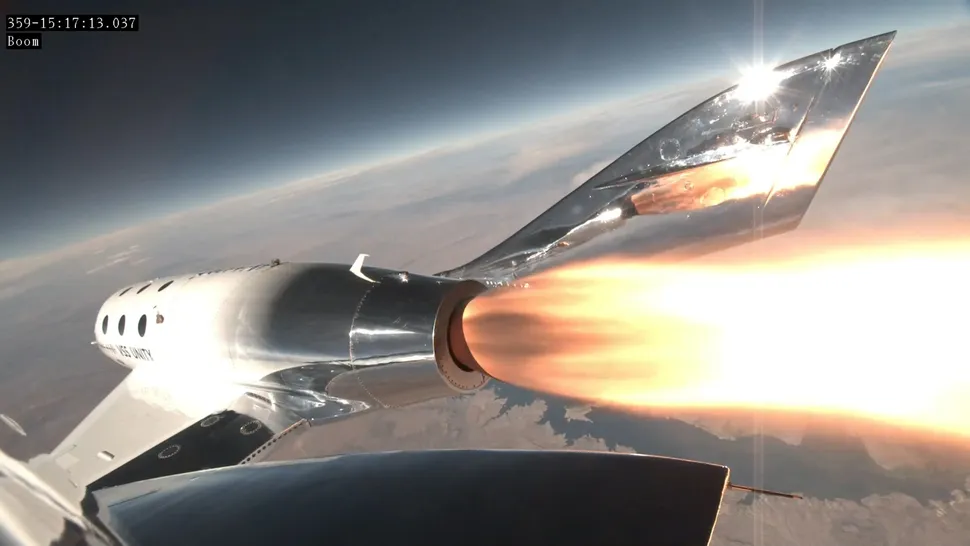On pace with its once-a-month flight goal, Virgin Galactic is about to embark on its fifth commercial mission, and likely its final flight of 2023.
Galactic 05 is scheduled to lift off this Thursday (Nov. 2) and will carry three passengers on a brief trip to suborbital space. The trio will fly aboard Virgin Galactic’s SpaceShipTwo space plane, named VSS Unity, and experience several minutes of weightlessness while they perform a quick round of research experiments and gaze at the wonders of Earth from a vantage point few have reached.
The Virgin Galactic crew accompanying them include one of the group’s astronaut instructors, responsible for preparing the three for their flight, as well as two pilots in the VSS Unity cockpit.
The mission will take off from Spaceport America in New Mexico, a state-owned launch facility that hosts Virgin Galactic as its main tenant. VSS Unity and its crew will be brought to altitude by SpaceShipTwo’s carrier aircraft, the double-cockpit-designed VMS Eve.
VMS Eve carries VSS Unity into the air, with the vehicle hanging from the plane’s mid-wing. Once the pair reaches about 50,000 feet (15,000 meters), Eve releases Unity , which drops and fires its single rocket motor to continue on a suborbital trajectory.
As Virgin Galactic begins to regularly check names off its list of early seat reservation-holders, the company also seems to be allowing those customers the option of anonymity. In the weeks leading up to flights over the past few months, Virgin Galactic has released passenger information at an inconsistent rate. For this flight, the company has released two of the three names for Galactic 05, listing the third passenger only as “Astronaut 022 — Private Astronaut — Franco-Italian nationality.”
The names of astronauts 020 and 021, however, are far from a mystery, and have already earned recognition in the spaceflight industry.
Alan Stern 020

Alan Stern is a planetary scientist most known for his role as principal investigator of NASA’s New Horizons mission, which flew by Pluto in 2015 and is currently exploring the Kuiper Belt, the ring of icy bodies beyond Neptune.
Stern’s work with NASA spans dozens of missions over more than two decades, and he currently serves as associate vice president of the Space Science Division at the Southwest Research Institute (SwRI). His Virgin Galactic seat is sponsored by SwRI and is part of NASA’s Flight Opportunities program, which aims to advance spaceflight technologies through suborbital research aboard commercial missions.
This will be Stern’s first time flying to space, but it won’t be the first far-off place his research has taken him. In addition to being an accomplished aircraft pilot, Stern has traveled to the depths of the North Atlantic Ocean, where he explored the wreck of the Titanic; he has journeyed to the South Pole; and he has flown numerous high altitude and parabolic flights, all in the pursuit of science.
His ride aboard VSS Unity will serve a similar goal. For Stern, Galactic 05 is, in part, a training mission for NASA-funded research he will perform on a future suborbital mission. Stern will be wearing a biomedical harness to monitor his vital signs throughout his flight, and he will participate in a series of risk-reduction operations and astronomical observations to evaluate the suborbital spacecraft environment to optimize those activities.
Credit: Space.com



